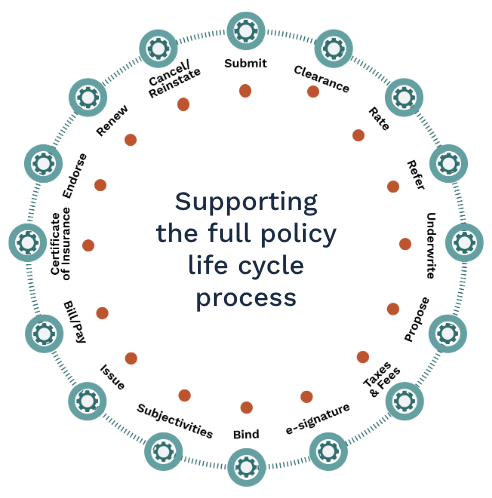The successful implementation of any policy administration system requires a clear understanding of customer requirements from day one. The Requirements Analysis is the foundation for the entire project, clarifying business requirements and user expectations. By clearly identifying business requirements and user expectations through effective communication and information gathering, we establish a congenial, collaborative tone for engagement.
Since Solartis solutions are customized to fit our clients' unique needs, it is essential that the focus is on learning everything there is to know about their requirements. This approach ensures that the solution that is implemented addresses their needs and resolves any challenges in the most efficient and effective manner.
By defining requirements from the outset, we can reduce confusion, miscommunication, and any potential issues down the road. Taking extra time and care in the requirements gathering, analysis, and documentation process ensures the delivery of optimal results.
How Does Solartis Accomplish a Comprehensive Customer Requirements Analysis?
We believe in affective communication to achieve a comprehensive requirements analysis.
During the Requirements Analysis, our team will communicate frequently with yours to:
- Define and set system capabilities.
- Understand expectations.
- Identify success metrics and criteria.
- Address and resolve any ambiguities.
- Clearly articulate project scope.
The Requirements Analysis is a collaborative effort between the Solartis team and the client. Both parties must commit to providing technical and business resources to gain a clear, comprehensive understanding of the project’s goals.
What Does The Process Look Like?
Solartis uploads its Base Insurance line of business Content from the Insure platform to an Excel workbook, which are then customized to the client line of business, product information, and existing requirements, along with detailed and specific data. This is used to obtain unique client requirements.
For ISO-based commercial lines products, the ISO country and state exceptions are included in worksheets as well. This allows reviewers to easily see and assess the countrywide and state-specific content in a single view to determine what base ISO content should be used. We then incorporate the carrier’s specific exceptions and deviations with “test raters” to make sure we configure and calculate them correctly.
This process expedites the receipt and accuracy of customer requirements and provides a basis for Solartis to rapidly incorporate differences into the cloned (customer-specific) base product
Using these extract files, state filings, and related requirement documents, Solartis can quickly and easily adjust base product content to unique specifications using the Product Management Toolkit. This is the toolkit that we and our customers use to configure and maintain insurance products.
What Is The End Result?
At the end of the requirements analysis phase, all parties will receive a jointly-created business requirements document that outlines the project’s scope and freezes the initial go-live requirements.
The Solartis requirements analysis is a critical part of our methodology, setting the foundation for a successful technology transition from the very start. By understanding our clients, we can deliver customized, uniquesolutions that fuel future success. Our requirements analysis is a well-oiled process that clarifies all requirements, creates alignment across teams, and ensures that nothing slips through the cracks.
"They are fast, simple, and cost-effective. Their team is an extremely reasonable group of people who care, really care, about your success. Every launch has some bumps - they worked above and beyond to make sure those bumps didn't disrupt our launch or our ability to write new business. Without Solartis, I wouldn't be projecting a 30% increase in topline growth."
said Cameron Linder, CEO, Western Bowling Proprietors Insurance (WBPI), Rednil Insurance Brokers, Inc.



